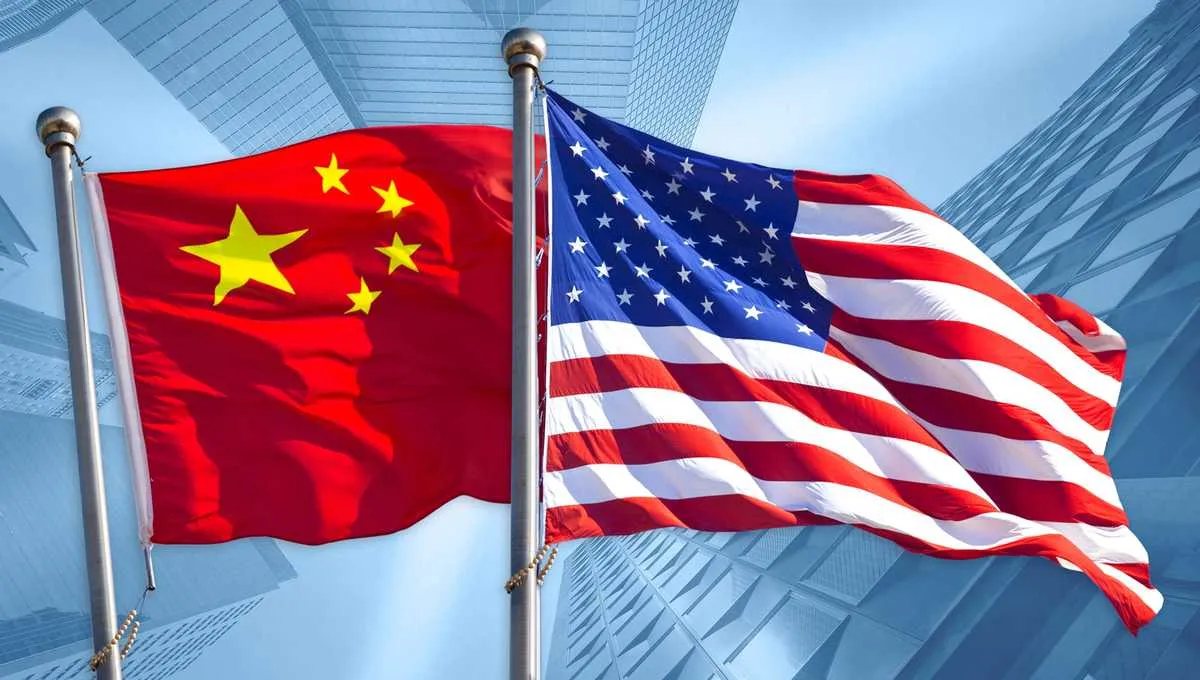In a significant diplomatic and trade breakthrough, China on Friday officially signaled its approval for the export of critical rare earth minerals to the United States. This announcement came just hours after top White House officials confirmed that a deal had been struck, marking a crucial de-escalation following weeks of intense negotiations over US access to these indispensable materials. The agreement, which appears to formalize an understanding initially reached in London earlier this month, provides a much-needed reprieve in the ongoing trade frictions between the world’s two largest economies, where tit-for-tat tariff escalations had spiraled into a strategic struggle over vital supply chains.
“China will approve the export application of controlled items that meet the conditions in accordance with the law. The United States will cancel a series of restrictive measures taken against China accordingly,” stated China’s Ministry of Commerce in a clear signal of intent. This statement was notably framed as a direct response to a specific inquiry regarding China’s acceleration of rare earth exports to the US, indicating a deliberate and public commitment to the terms of the agreement.
The Chinese announcement followed earlier confirmations from the US side. On Thursday, US President Donald Trump stated, “we just signed with China yesterday,” without elaborating on the specifics. His Commerce Secretary, Howard Lutnick, further elaborated to Bloomberg News, confirming that China is “going to deliver rare earths to us” and that once these shipments commence, “we’ll take down our countermeasures” – a reference to the export curbs the US had imposed on China in May. These countermeasures had been a direct retaliation to US accusations that Beijing was failing to honor an earlier agreement reached in Geneva that month, specifically by holding up rare earth exports.
China’s Commerce Ministry, in its Friday statement, expressed a broader hope that both nations could “continuously enhance consensus, reduce misunderstandings, strengthen cooperation, and jointly promote the healthy, stable and sustainable development of China-US economic and trade relations.” This conciliatory tone suggests a desire to move past recent tensions, at least concerning this critical commodity.
The Thorny Path to Agreement: A Chronology of Trade Tensions
The journey to this rare earth deal has been fraught with escalating trade tensions that began to intensify in April of the previous year. The dispute initially manifested as a series of “tit-for-tat tariffs”, a reciprocal imposition of import duties by both countries on each other’s goods. This traditional trade war strategy, intended to exert economic pressure, quickly morphed into a more profound “supply chain struggle,” where control over essential raw materials and technological components became a central battleground.
- April 2025: Reciprocal Tariffs: The initial spark in the latest round of tensions saw President Trump imposing new “reciprocal tariffs” on Chinese goods. China swiftly retaliated with its own set of duties, escalating the economic standoff.
- May 2025: Geneva Agreement and Quick Fallout: In an attempt to de-escalate, officials from both sides convened in Geneva, reaching an agreement to reduce these hefty tariffs. However, this accord quickly unraveled. The Trump administration accused Beijing of not honoring the deal, specifically by maintaining what the US perceived as unofficial export controls on rare earths.
- US Retaliation and Supply Chain Curbs: Frustrated by China’s perceived non-compliance, the US retaliated decisively. Washington imposed stringent export curbs on a range of critical Chinese industries, including chips, software, ethane, and jet engines. Furthermore, the US threatened to revoke the visas of Chinese college students, a move that stirred significant controversy and highlighted the breadth of the dispute beyond mere trade goods. China, for its part, maintained it was complying with the Geneva agreement and placed the blame squarely on Washington for reneging on its promises.
- June 2025: London Negotiations: With tensions high and critical supply chains under duress, officials returned to the negotiating table in London. These talks proved more fruitful, culminating in the understanding that has now been formalized. Following these discussions, President Trump publicly announced a deal, pending approval from both national leaders, and indicated a mutual agreement to ease export restrictions. He notably stated on social media, “Magnets and any necessary rare earths will be supplied up front by China,” signaling the immediate priority of securing these materials.
A recent Reuters report further corroborated the US intent to ease restrictions, noting that the US Commerce Department had allowed ethane traders to load vessels bound for China, albeit prohibiting immediate unloading without authorization. This was widely interpreted by experts as a preparatory step towards lifting the broader curbs, paving the way for the current formalization.
Rare Earths in Focus: The Unseen Bedrock of Modern Technology
The intense focus on rare earth minerals is not arbitrary. These 17 metallic elements – not inherently rare in geological abundance, but difficult and costly to extract and process – possess unique magnetic, catalytic, and luminescence properties that make them indispensable across a vast spectrum of modern technologies, from everyday consumer electronics to advanced defense systems. Without them, much of our contemporary world would simply cease to function.
What are Rare Earths and Why are They So Important?
The term “rare earths” refers to the 15 lanthanide elements on the periodic table, plus scandium and yttrium. While they are found throughout the Earth’s crust, they rarely occur in economically viable concentrations and their extraction and separation from surrounding materials is a complex, environmentally intensive, and expensive process. Their importance stems from their distinct characteristics:
- Exceptional Magnetic Properties: Elements like Neodymium, Praseodymium, and Dysprosium are crucial for creating powerful, lightweight permanent magnets. These are essential for miniaturizing electronic devices and improving the efficiency of motors and generators.
- Catalytic Activity: Cerium and Lanthanum are used as catalysts in various industrial processes, including petroleum refining and automotive catalytic converters.
- Luminescence: Europium and Terbium are vital for producing vibrant colors in display technologies (LEDs, LCDs, plasma screens) and energy-efficient lighting.
- High Conductivity and Strength: Other rare earths contribute to alloys that are lightweight yet incredibly strong, or enhance the conductivity of electronic components.
Indispensable Applications Across Key Industries:
The applications of rare earths permeate almost every facet of the modern economy and national security:
- Everyday Electronics: Your smartphone, laptop, tablet, flat-screen television, and even many household appliances rely on rare earth elements for their displays, speakers, and internal circuitry. For instance, neodymium is crucial for small, powerful magnets in earphones and phone vibrators, while yttrium and europium contribute to the red and green colors on your screen.
- Clean Energy Technologies: As the world pivots towards sustainable energy, rare earths become even more critical. Neodymium and dysprosium are fundamental to the powerful magnets used in wind turbine generators, allowing them to produce electricity efficiently even at low wind speeds. They are also indispensable for the electric motors in hybrid and electric vehicles (EVs), contributing to their performance and range. The growth of the green economy directly correlates with the demand for these minerals.
- Defense and Aerospace: This sector represents a critical strategic dependency. Rare earths are vital for advanced military hardware, including fighter jets (e.g., in avionics and flight control systems), precision-guided munitions, night-vision goggles, laser rangefinders, and missile defense systems. The reliance on these elements for national security applications makes their supply a matter of profound strategic concern for the United States and its allies.
- Medical Imaging: Elements like gadolinium are used in MRI contrast agents, enhancing the clarity of medical scans and aiding in the diagnosis of various conditions.
- Industrial Applications: Beyond these high-profile uses, rare earths are also employed in catalytic converters to reduce automotive emissions, in petroleum refining to crack crude oil, and in various specialized alloys and ceramics.
China’s Unrivaled Dominance: A Geopolitical Lever
The reason rare earths became such a potent lever in the US-China trade dispute stems from China’s near-monopoly on their processing. According to the International Energy Agency (IEA), China controls approximately 90% of global rare earth processing. This dominance is not due to a disproportionate share of global rare earth reserves, but rather a strategic, long-term national policy that combined:
- Early Investment: China recognized the strategic importance of rare earths decades ago and invested heavily in mining, extraction, and refining technologies, often with significant state support.
- Lower Production Costs: In the past, less stringent environmental regulations and lower labor costs allowed China to produce rare earths at a lower price point than competitors, driving out or deterring operations in other countries. The processing of rare earths can generate toxic and radioactive waste, and proper environmental management is costly.
- Vertical Integration: China developed a fully integrated supply chain, from mining to the production of finished rare earth magnets and alloys, further cementing its control.
This unparalleled control over the supply chain has provided Beijing with significant geopolitical leverage. Disruptions to this supply, whether through export restrictions or other means, can send shockwaves through global industries dependent on these materials, particularly impacting countries that have divested from their own domestic processing capabilities.
The Deal’s Specifics: Concessions and Lingering Concerns
The agreement appears to be a practical, albeit perhaps temporary, solution to an immediate supply chain crisis. The core of the deal involves China’s commitment to “accelerate the export of rare earths” to the US for “compliant” applications, in exchange for the US lifting its “countermeasures.”
- China’s Commitments: China’s Ministry of Commerce’s statement affirms that it will approve export applications that “meet the conditions in accordance with the law.” While this signals a willingness to facilitate trade, industry insiders and experts have noted that despite China’s recent assurances of “speeding up” approvals, many companies have still struggled to secure sufficient supplies. This suggests that the “conditions” and the “dual-use licensing regime” introduced by China in April, which requires exporters to seek approval for each shipment and submit documentation verifying the intended end-use, could still pose hurdles. This regime was implemented after the US levied its reciprocal tariffs, adding layers of bureaucracy to rare earth exports.
- US Concessions: The US, in turn, will “cancel a series of restrictive measures.” While President Trump hinted at allowing Chinese college students to attend American universities, the most tangible and immediate concession appears to be the easing of export curbs on products like ethane, chips, and jet engines. Reuters’ reporting on ethane traders being allowed to load vessels for China, pending authorization for unloading, is a clear sign that the administration is preparing to lift these restrictions. This demonstrates a willingness by the US to offer tangible concessions to secure rare earth access.
However, a crucial caveat remains. Analysts widely expect that “China’s dual use export restrictions still prohibit shipments to military suppliers, leaving US defense contractors without access to such materials.” This nuance is significant. “Dual-use” items are goods, software, and technology that can be used for both civilian and military purposes. If China’s licensing regime maintains a strict prohibition on rare earth exports for military applications, it means that while civilian industries may find relief, the critical national security reliance on Chinese rare earths for defense contractors remains an unresolved vulnerability. This suggests that the agreement is a commercial de-escalation rather than a complete resolution of strategic dependencies.
Broader Implications: Economic Stability, Strategic Autonomy, and Trust
This rare earth deal carries profound economic and geopolitical implications, extending far beyond the immediate supply of critical minerals.
Economic De-escalation and Supply Chain Stability
The primary immediate benefit of the deal is a potential de-escalation of trade tensions. For industries globally, particularly those in the US that rely heavily on rare earths for manufacturing, this agreement offers a lifeline. It reduces the immediate threat of supply chain disruptions, which can lead to higher costs, production delays, and a loss of competitiveness. The electronics, automotive (especially EV), and renewable energy sectors in the US will breathe a collective sigh of relief, as assured access to rare earths directly impacts their ability to innovate and produce. Stabilizing these supply chains is crucial for global economic recovery and growth.
China’s Strategic Calculus
For China, formalizing this deal allows it to maintain its crucial role in global supply chains while signaling a willingness to negotiate. By releasing rare earth exports, China can alleviate international pressure and potentially avoid further retaliatory measures from the US that could harm other sectors of its economy. It also reinforces its position as an indispensable global supplier, even as other nations seek diversification. This move can be seen as a calibrated effort to manage its trade relations, avoid a complete “decoupling” from Western economies, and perhaps even project an image of a responsible global trade partner, despite the earlier disruptions.
US Quest for Resilience and Diversification
For the US, this deal is a tactical victory, securing immediate access to critical materials. However, it does not fundamentally alter the long-term strategic imperative to reduce reliance on any single source for rare earths. The underlying vulnerability of the US supply chain has been starkly highlighted by this dispute. Consequently, the US and its allies (such as Australia, Canada, and Japan) are actively pursuing strategies to diversify rare earth supply chains. These efforts include:
- Revitalizing Domestic Mining and Processing: Projects in the US (e.g., Mountain Pass mine in California) and allied countries aim to restart or expand rare earth extraction and processing capabilities. This involves significant capital investment and overcoming environmental challenges.
- Developing Alternative Technologies: Research into reducing the amount of rare earths needed in products or finding alternative materials that can achieve similar properties.
- Strategic Stockpiling: Building national reserves of critical minerals to mitigate against future supply disruptions.
- International Partnerships: Collaborating with trusted partners to establish resilient and diverse rare earth supply chains, ensuring that no single nation holds disproportionate leverage.
This agreement is therefore likely viewed by Washington as a necessary short-term fix that buys time for these long-term diversification strategies to mature. The deal does not eliminate the strategic challenge posed by China’s rare earth dominance.
Expert Perspectives and Future Outlook: A Fragile Equilibrium
Commercial lawyer and economic analyst Silver Kayondo’s earlier remarks on broader economic instability resonate here. While this rare earth deal is a positive sign, experts caution against overoptimism regarding the full resolution of US-China trade tensions or the complete elimination of supply chain vulnerabilities.
Analysts will be closely watching several factors to determine the true sustainability and impact of this deal:
- Implementation and Consistency: Will China consistently approve export licenses for all non-military applications without arbitrary delays or new restrictions? The “compliant” application clause could still be a source of friction.
- The “Dual-Use” Divide: The ongoing exclusion of US defense contractors from Chinese rare earth supplies indicates that the national security dimension of the rare earth issue remains highly sensitive and unresolved. This will continue to drive US efforts to build a secure domestic military supply chain for these materials.
- Broader Trade Relations: Will this agreement pave the way for broader de-escalation in other areas of the US-China trade and technology dispute, or is it an isolated concession on a particularly sensitive item? The wider narrative of “technological decoupling” suggests that strategic competition will continue, even if specific trade disputes are temporarily resolved.
- Trust Building: While the Ministry of Commerce expressed hope for “continuously enhanc[ing] consensus” and “reduc[ing] misunderstandings,” the recent history of agreements quickly unraveling suggests that trust between the two superpowers remains fragile. Each new agreement is a test of this trust.
Ultimately, this rare earth deal represents a pragmatic step forward, demonstrating that even amidst intense geopolitical competition, areas of mutual interest can lead to negotiation and resolution. It provides immediate relief for industries and signals a willingness from both sides to prevent a complete breakdown of economic ties. However, it also serves as a potent reminder of the strategic importance of rare earth elements and the ongoing global efforts to build more resilient and diversified supply chains for the technologies that underpin modern life and national security. The true measure of this breakthrough will lie not just in its immediate impact, but in its ability to foster a more predictable and stable future for critical mineral trade.
This deal is a temporary truce in a larger, evolving strategic competition. While it addresses an immediate choke point, the long-term goal for the US and its allies will remain to reduce reliance on any single source for these indispensable materials.
Ready to take your career to the next level? Join our dynamic courses: ACCA, HESI A2, ATI TEAS 7 , HESI EXIT , NCLEX – RN and NCLEX – PN, Financial Literacy!🌟 Dive into a world of opportunities and empower yourself for success. Explore more at Serrari Ed and start your exciting journey today! ✨
photo source: Google
By: Montel Kamau
Serrari Financial Analyst
30th June, 2025
Article, Financial and News Disclaimer
The Value of a Financial Advisor
While this article offers valuable insights, it is essential to recognize that personal finance can be highly complex and unique to each individual. A financial advisor provides professional expertise and personalized guidance to help you make well-informed decisions tailored to your specific circumstances and goals.
Beyond offering knowledge, a financial advisor serves as a trusted partner to help you stay disciplined, avoid common pitfalls, and remain focused on your long-term objectives. Their perspective and experience can complement your own efforts, enhancing your financial well-being and ensuring a more confident approach to managing your finances.
Disclaimer: This article is for informational purposes only and does not constitute financial advice. Readers are encouraged to consult a licensed financial advisor to obtain guidance specific to their financial situation.
Article and News Disclaimer
The information provided on www.serrarigroup.com is for general informational purposes only. While we strive to keep the information up to date and accurate, we make no representations or warranties of any kind, express or implied, about the completeness, accuracy, reliability, suitability, or availability with respect to the website or the information, products, services, or related graphics contained on the website for any purpose. Any reliance you place on such information is therefore strictly at your own risk.
www.serrarigroup.com is not responsible for any errors or omissions, or for the results obtained from the use of this information. All information on the website is provided on an as-is basis, with no guarantee of completeness, accuracy, timeliness, or of the results obtained from the use of this information, and without warranty of any kind, express or implied, including but not limited to warranties of performance, merchantability, and fitness for a particular purpose.
In no event will www.serrarigroup.com be liable to you or anyone else for any decision made or action taken in reliance on the information provided on the website or for any consequential, special, or similar damages, even if advised of the possibility of such damages.
The articles, news, and information presented on www.serrarigroup.com reflect the opinions of the respective authors and contributors and do not necessarily represent the views of the website or its management. Any views or opinions expressed are solely those of the individual authors and do not represent the website's views or opinions as a whole.
The content on www.serrarigroup.com may include links to external websites, which are provided for convenience and informational purposes only. We have no control over the nature, content, and availability of those sites. The inclusion of any links does not necessarily imply a recommendation or endorsement of the views expressed within them.
Every effort is made to keep the website up and running smoothly. However, www.serrarigroup.com takes no responsibility for, and will not be liable for, the website being temporarily unavailable due to technical issues beyond our control.
Please note that laws, regulations, and information can change rapidly, and we advise you to conduct further research and seek professional advice when necessary.
By using www.serrarigroup.com, you agree to this disclaimer and its terms. If you do not agree with this disclaimer, please do not use the website.
www.serrarigroup.com, reserves the right to update, modify, or remove any part of this disclaimer without prior notice. It is your responsibility to review this disclaimer periodically for changes.
Serrari Group 2025












